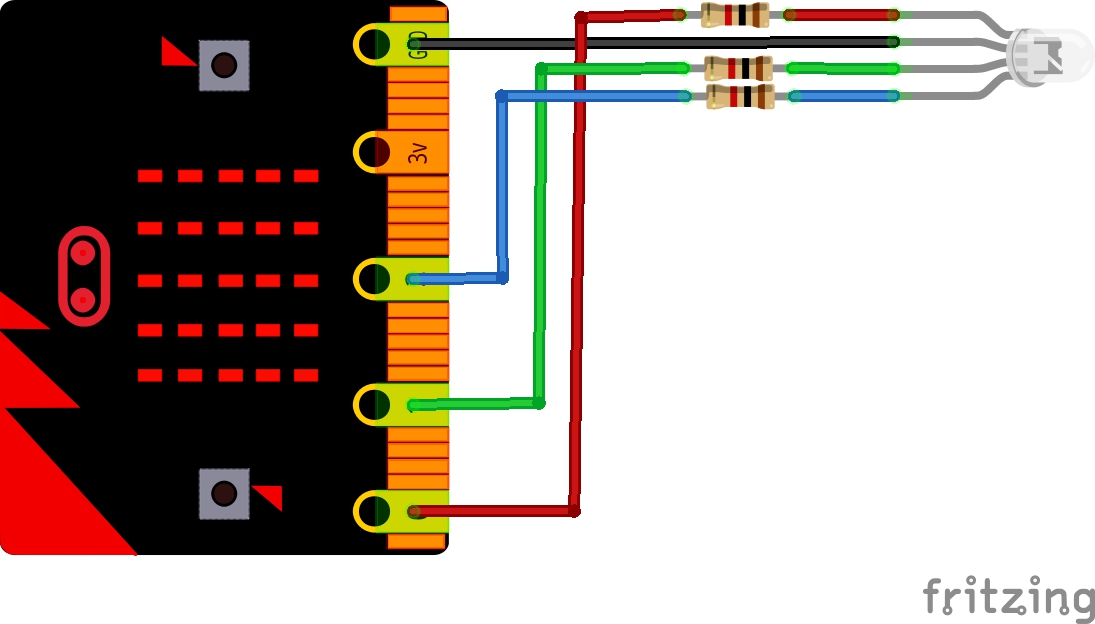2.6K
Tri-color LEDs contain three different LED emitters in one case. Each emitter is connected to a separate lead so they can be controlled independently. A four-lead arrangement is typical with one common lead (anode or cathode) and an additional lead for each color. Others, however, have only two leads (positive and negative) and have a built-in electronic controller.
I used an RGB LED module, I find this is easier than using a breadboard with an RGB led and required resistors
Parts List
| Name | Link |
| Micro:bit | Micro:bit Development Board |
| RGB Board | Full Color LED Module 10mm Bright RGB Board Electronic Building Blocks For Arduino |
| Edge Breakout I/O Expansion | Edge Breakout I/O Expansion Extension Board for BBC micro:bit |
| Connecting cables | Free shipping Dupont line 120pcs 20cm male to male + male to female and female to female jumper wire |
Layout
 microbit and rgb led example
microbit and rgb led example




